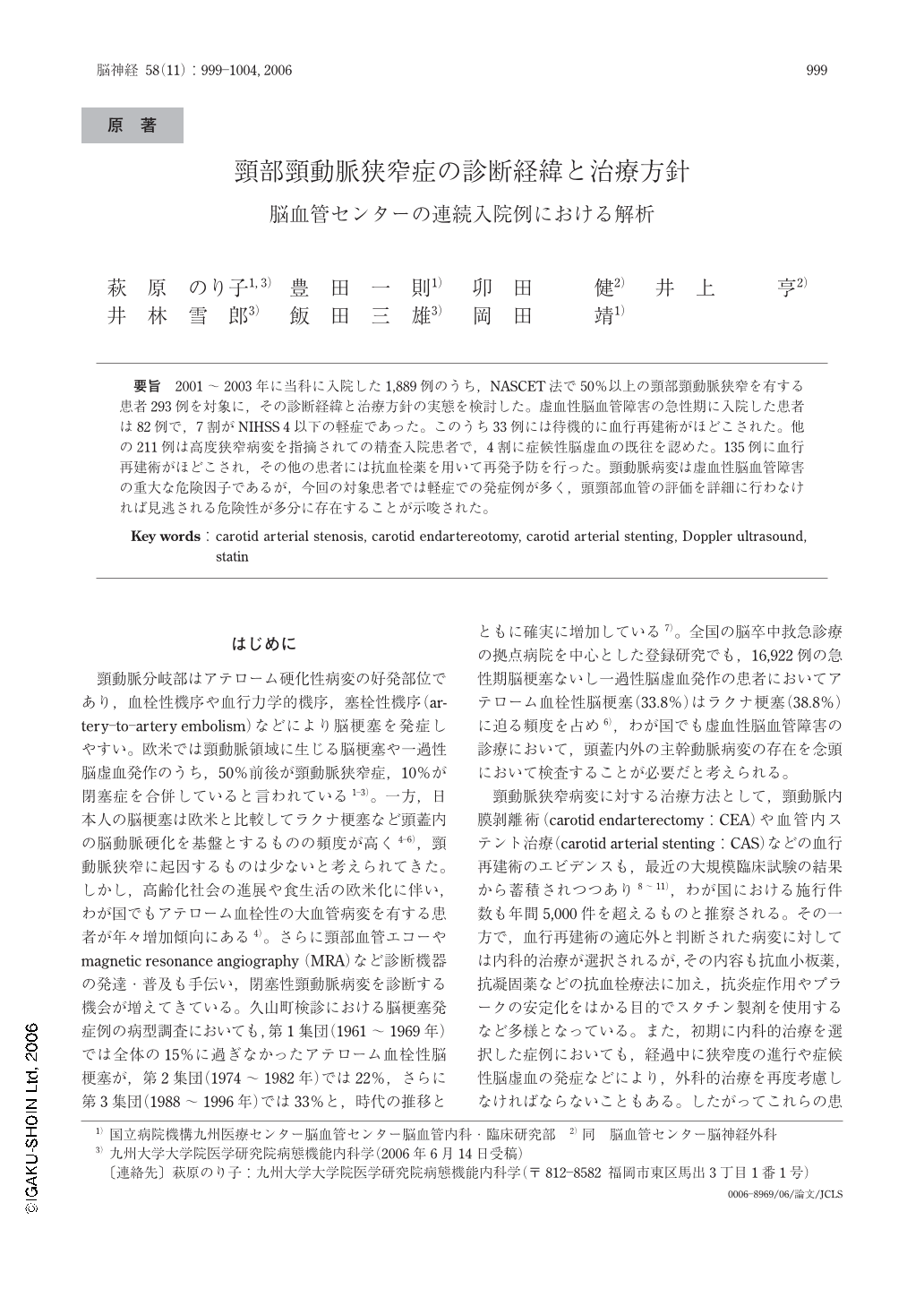Japanese
English
- 有料閲覧
- Abstract 文献概要
- 1ページ目 Look Inside
- 参考文献 Reference
要旨 2001~2003年に当科に入院した1,889例のうち,NASCET法で50%以上の頸部頸動脈狭窄を有する患者293例を対象に,その診断経緯と治療方針の実態を検討した。虚血性脳血管障害の急性期に入院した患者は82例で,7割がNIHSS 4以下の軽症であった。このうち33例には待機的に血行再建術がほどこされた。他の211例は高度狭窄病変を指摘されての精査入院患者で,4割に症候性脳虚血の既往を認めた。135例に血行再建術がほどこされ,その他の患者には抗血栓薬を用いて再発予防を行った。頸動脈病変は虚血性脳血管障害の重大な危険因子であるが,今回の対象患者では軽症での発症例が多く,頭頸部血管の評価を詳細に行わなければ見逃される危険性が多分に存在することが示唆された。
Carotid arterial stenosis is a major risk factor for ischemic stroke and is increasing in Japan as the lifestyle has been westernized. The purpose of this study was to clarify the detailed process of diagnosis and treatment of patients with carotid arterial stenosis. Of the consecutive 1,889 hospitalized patients in our cerebrovascular center during 2001 and 2003,293 patients had carotid stenosis 50% or more in diameter by the NASCET method ; 82 patients were hospitalized during the acute stage of ischemic stroke and 211 patients with or without past history of ischemic stroke were admitted in the chronic stage. Among acute ischemic stroke patients, 62 patients (76%) had mild neurological symptoms of NIH Stroke Scale score ≦4 on admission. As the initial treatment during the acute phase, all patients underwent antithrombotic medication ; 33 of them underwent carotid endarterectomy (CEA) or carotid arterial stenting (CAS) in the chronic stage. Of 211 chronic patients, 123 (58%) did not have a history of symptomatic ischemic stroke, and instead had nonspecific symptoms, including carotid bruit, headache, and vertigo, or were diagnosed as having carotid artery stenosis by examinations of preoperative screenings. One hundred and thirty-five chronic patients underwent CEA/CAS and all the others except for a patient with serious gastrointestinal bleeding underwent antithrombotic medication. Statin treatment was chosen for 59 acute patients and 66 chronic patients. Because many patients with carotid arterial stenosis had mild symptoms during the acute phase or did not have ischemic episodes, we might overlook carotid lesions unless we performed screening examinations using ultrasound or magnetic resonance angiography.

Copyright © 2006, Igaku-Shoin Ltd. All rights reserved.


